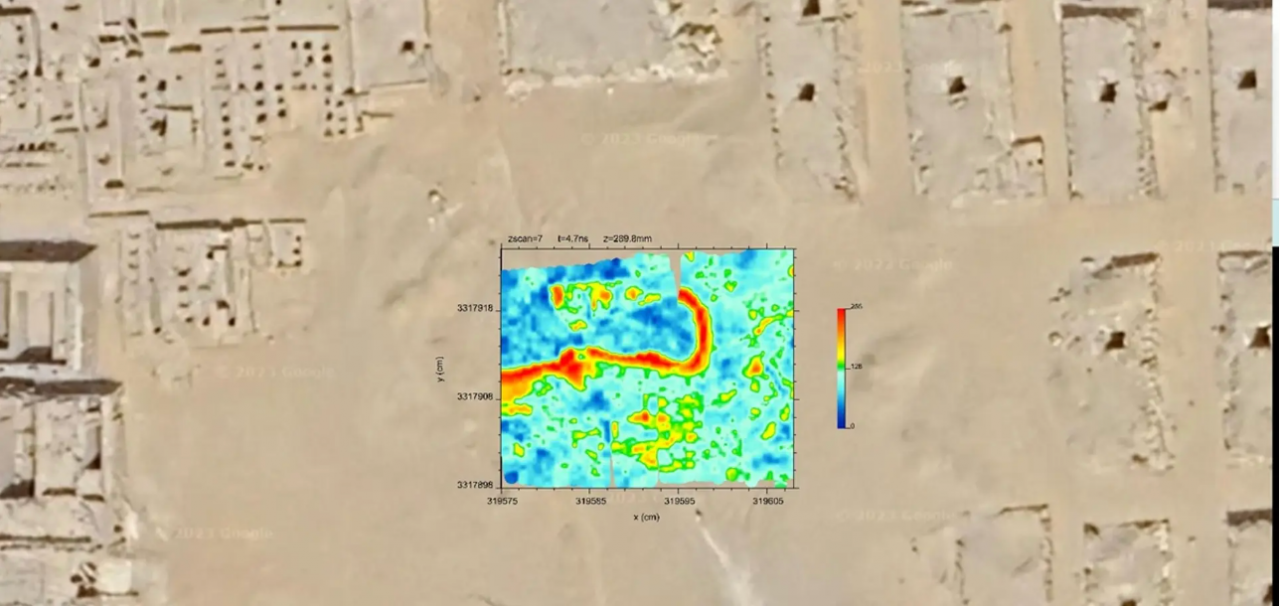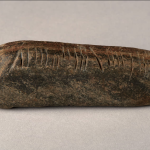
A previously unknown L-shaped structure has been identified by researchers using ground-penetrating technology in an ancient Egyptian cemetery in Giza, according to a study published in the journal Archaeological Prospection on Monday.
The researchers, a joint team of researchers from Higashi Nippon International University, Tohoku University, and Egypt』s National Research Institute of Astronomy and Geophysics, scanned below the sand』s surface in a 「blank area」 of Giza』s Western Cemetery alongside the Great Pyramid of Khufu.
The Western Cemetery is, according to the researchers, 「an important burial place of members of the royal family and high-class officers」 that is densely populated with mastabas, a type of tomb with rectangular funerary chapels that give way to shafts connected to underground burial chambers. However, there is the afforementioned blank space in the center of the cemetery with no aboveground structures and on which no noteworthy excavations have been conducted.
Over two years beginning in 2021, the team conducted a geophysical survey, using a combination of ground-penetrating radar (GPR) and electrical resistivity tomography (ERT) to see under the surface. The surveys revealed anomalies they believe 「could be vertical walls of limestone or shafts leading to a tomb structure」.
The team then made a further series of surveys using another kind of ground-penetrating radar to determine the shape of the large anomaly. The results indicated an L-shaped structure roughly 33 by 49 feet that lay six-and-a-half feet below the ground.
The researchers are still unsure of its purpose. It may have served as a tomb entrance or a construction site later backfilled with sand. However, it seems to be connected to another 33 by 33-foot structure up to 33 feet beneath the ground. Without further excavation its function ultimately remains unclear.
